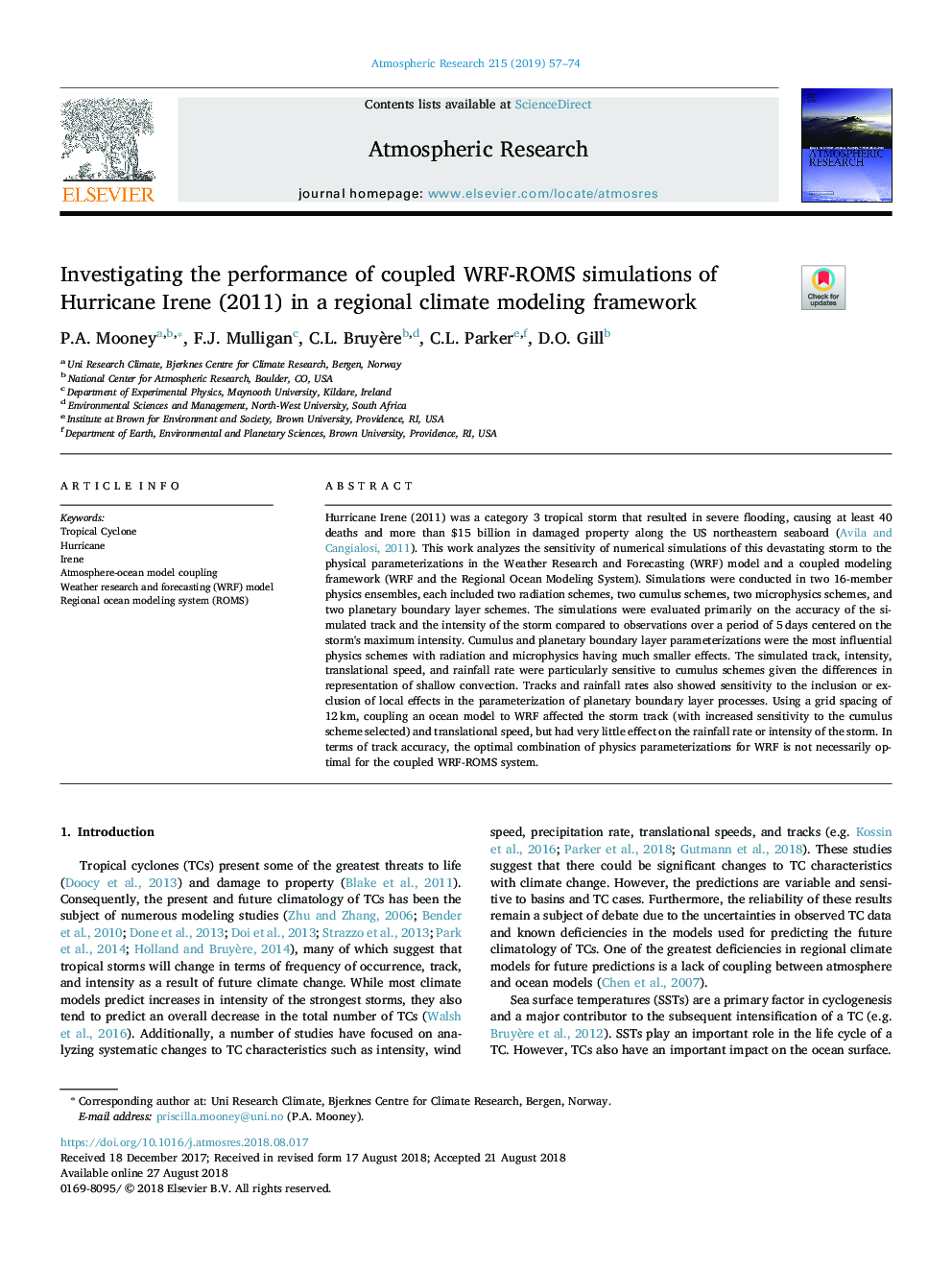| Article ID | Journal | Published Year | Pages | File Type |
|---|---|---|---|---|
| 8965978 | Atmospheric Research | 2019 | 18 Pages |
Abstract
Hurricane Irene (2011) was a category 3 tropical storm that resulted in severe flooding, causing at least 40 deaths and more than $15 billion in damaged property along the US northeastern seaboard (Avila and Cangialosi, 2011). This work analyzes the sensitivity of numerical simulations of this devastating storm to the physical parameterizations in the Weather Research and Forecasting (WRF) model and a coupled modeling framework (WRF and the Regional Ocean Modeling System). Simulations were conducted in two 16-member physics ensembles, each included two radiation schemes, two cumulus schemes, two microphysics schemes, and two planetary boundary layer schemes. The simulations were evaluated primarily on the accuracy of the simulated track and the intensity of the storm compared to observations over a period of 5â¯days centered on the storm's maximum intensity. Cumulus and planetary boundary layer parameterizations were the most influential physics schemes with radiation and microphysics having much smaller effects. The simulated track, intensity, translational speed, and rainfall rate were particularly sensitive to cumulus schemes given the differences in representation of shallow convection. Tracks and rainfall rates also showed sensitivity to the inclusion or exclusion of local effects in the parameterization of planetary boundary layer processes. Using a grid spacing of 12â¯km, coupling an ocean model to WRF affected the storm track (with increased sensitivity to the cumulus scheme selected) and translational speed, but had very little effect on the rainfall rate or intensity of the storm. In terms of track accuracy, the optimal combination of physics parameterizations for WRF is not necessarily optimal for the coupled WRF-ROMS system.
Related Topics
Physical Sciences and Engineering
Earth and Planetary Sciences
Atmospheric Science
Authors
P.A. Mooney, F.J. Mulligan, C.L. Bruyère, C.L. Parker, D.O. Gill,
